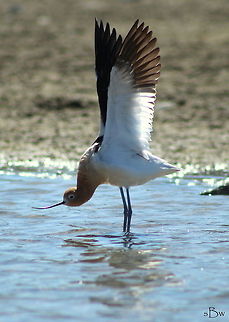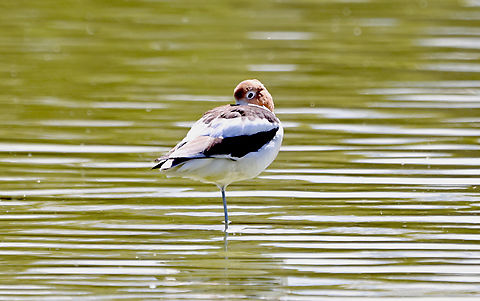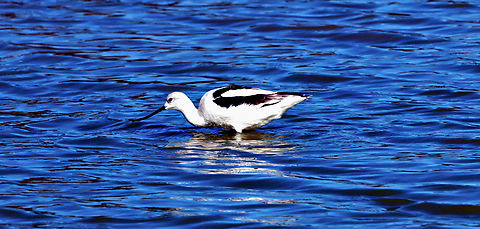
Appearance
This avocet has long, thin, gray legs, giving it its colloquial name, blue shanks. The plumage is black and white on the back with white on the underbelly. The neck and head are cinnamon colored in the summer and gray in the winter. The long, thin bill is upturned at the end. The adult bird measures 40–51 cm in length, 68–76 cm and 275–420 g in weight....hieroglyph snipped......hieroglyph snipped...
Reproduction
The breeding habitat is marshes, beaches, prairie ponds, and shallow lakes in the mid-west as far north as southern Alberta, Saskatchewan, and Manitoba, and on the Pacific coast of North America. American avocets form breeding colonies numbering dozens of pairs. When breeding is over the birds gather in large flocks, sometimes including hundreds of birds. Nesting occurs near water, usually on small islands or boggy shorelines where access by predators is difficult. The female lays four eggs in a saucer-shaped nest, and both sexes take turns incubating them. Upon hatching, the chicks feed themselves; they are never fed by their parents.This species is migratory, and mostly winters on the southern Atlantic and Pacific coasts of Mexico and the United States.
The American avocet forages in shallow water or on mud flats, often sweeping its bill from side to side in water as it seeks its crustacean and insect prey.
References:
Some text fragments are auto parsed from Wikipedia.
